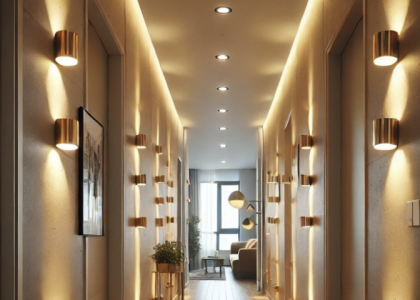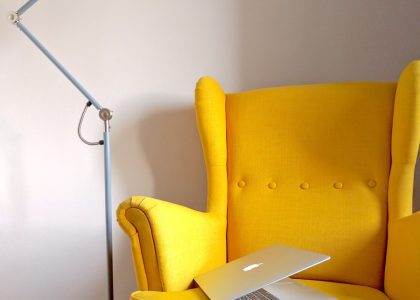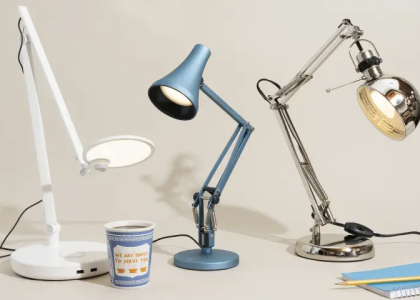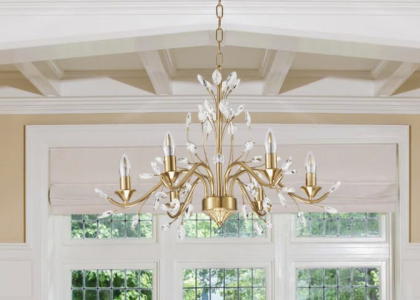Lighting Santizodesign is a fundamental aspect of our environment that significantly influences our daily lives. It affects our mood, productivity, and overall well-being. Proper illumination creates a welcoming atmosphere, while inadequate lighting can cause discomfort and eye strain.
Understanding lighting’s importance is crucial for designing spaces that are both functional and visually appealing. Well-designed lighting enhances a room’s aesthetics, accentuates architectural elements, and establishes a sense of balance and harmony. It also impacts our circadian rhythm, which regulates sleep patterns and overall health.
Additionally, appropriate lighting is essential for efficient task performance in both residential and commercial settings. The psychological effects of lighting are substantial. Bright, natural light can elevate mood and increase energy levels, while soft, warm lighting can create a cozy and intimate ambiance.
Recognizing these psychological impacts is vital for designing spaces that promote relaxation and well-being. In conclusion, lighting plays a critical role in shaping our environment and significantly affects our daily experiences. Its ability to transform spaces and influence our physical and emotional states underscores its importance in both interior and exterior design.
Choosing the Right Lighting Fixtures
Assessing the Purpose of the Space
The first step in choosing the right lighting fixtures is to determine the function of the space. Different areas of the home require different types of lighting. For instance, task lighting is essential in areas where activities such as reading or cooking take place, as it provides focused illumination. On the other hand, ambient lighting is crucial in living areas, as it creates a warm and inviting atmosphere.
Considering Style and Decor
Once the function of the space is established, it’s essential to consider the style and decor of the room. The lighting fixtures should complement the overall design aesthetic and enhance the visual appeal of the space. This ensures a cohesive and harmonious atmosphere.
Personal Preferences and Sustainability
In addition to functionality and style, personal preferences also play a significant role in choosing lighting fixtures. Some individuals may prefer bright, white light for a clean and modern look, while others may opt for warm, soft light for a cozy and intimate ambiance. Furthermore, energy efficiency and sustainability are vital considerations. LED lights, for example, are not only energy-efficient but also have a longer lifespan, making them a popular choice for environmentally conscious consumers.
Ultimately, selecting the right lighting fixtures involves striking a delicate balance between functionality, style, personal preferences, and sustainability.
Utilizing Different Types of Lighting
There are several different types of lighting that can be utilized to create a well-lit and visually appealing space. Ambient lighting, also known as general lighting, provides overall illumination and sets the tone for a room. This type of lighting can be achieved through ceiling-mounted fixtures, chandeliers, or wall sconces.
Task lighting, on the other hand, is focused on specific areas where activities such as reading, cooking, or working take place. This type of lighting is typically provided by desk lamps, under-cabinet lights, or pendant lights. Accent lighting is used to highlight specific features or objects in a room, such as artwork, architectural details, or plants.
This type of lighting can be achieved through track lighting, recessed lights, or picture lights. In addition to these primary types of lighting, there are also specialty lighting options that can be used to create specific effects or moods. For example, decorative string lights can add a whimsical touch to outdoor spaces, while color-changing LED lights can create a dynamic and vibrant atmosphere.
Understanding the different types of lighting and how they can be used in combination with one another is essential in creating a well-balanced and visually appealing space.
Creating a Cozy Atmosphere with Warm Lighting
Creating a cozy atmosphere with warm lighting is essential in making a space feel inviting and comfortable. Warm lighting, typically achieved through soft white or warm white bulbs, can create a sense of intimacy and relaxation. This type of lighting is ideal for living rooms, bedrooms, and dining areas where people gather and socialize.
To create a cozy atmosphere with warm lighting, it is important to consider the placement of the light fixtures. Table lamps with warm bulbs can create a soft glow that adds warmth to a room, while wall sconces or pendant lights can provide ambient illumination that enhances the overall coziness of the space. In addition to the type of light bulbs used, the color temperature of the light also plays a crucial role in creating a cozy atmosphere.
Warm white light with a color temperature of around 2700-3000K is ideal for creating a soft and inviting ambiance. Furthermore, dimmer switches can be used to adjust the brightness of the warm lighting, allowing for greater control over the mood and atmosphere of a space. Overall, creating a cozy atmosphere with warm lighting involves careful consideration of both the type of light fixtures and the color temperature of the light.
Enhancing Productivity with Bright, Task Lighting
In workspaces such as home offices or commercial offices, enhancing productivity with bright task lighting is essential for creating an environment that supports focus and efficiency. Bright task lighting provides targeted illumination for activities such as reading, writing, or working on a computer. This type of lighting is typically achieved through desk lamps, floor lamps, or pendant lights that provide direct and focused light.
When selecting task lighting for workspaces, it is important to consider factors such as brightness levels, color temperature, and glare control. Bright LED lights with a color temperature of around 4000-5000K are ideal for task lighting as they provide crisp and clear illumination that promotes alertness and concentration. In addition to providing adequate brightness, task lighting should also be adjustable to accommodate different tasks and preferences.
Adjustable desk lamps with flexible arms or swivel heads allow users to direct light where it is needed most, reducing eye strain and improving productivity. Furthermore, incorporating task lighting with built-in dimmer controls allows users to customize the brightness level according to their specific needs. Overall, enhancing productivity with bright task lighting involves selecting fixtures that provide targeted illumination while also considering factors such as adjustability and glare control.
Incorporating Decorative Lighting for Aesthetics
Creating Focal Points
Decorative lighting fixtures such as chandeliers, pendant lights, or wall sconces can serve as focal points in a room, adding personality and style to the overall design. When incorporating decorative lighting for aesthetics, it is important to consider the scale and proportion of the fixtures in relation to the size of the space.
Adding Drama and Luxury
Large chandeliers or pendant lights can make a bold statement in grand foyers or dining rooms, while smaller decorative fixtures can add charm and character to more intimate spaces such as bedrooms or bathrooms. Furthermore, decorative lighting can also be used to create dramatic effects through the use of unique materials or intricate designs. For example, decorative pendant lights with intricate metalwork or hand-blown glass shades can add an artistic touch to a room and create a sense of luxury and sophistication.
Outdoor Whimsy
Additionally, decorative string lights or LED tape lights can be used to add whimsy and playfulness to outdoor spaces such as patios or gardens. Overall, incorporating decorative lighting for aesthetics involves careful consideration of scale, proportion, materials, and design details.
Using Lighting to Set the Mood
Lighting has the power to set the mood and create different atmospheres depending on the desired effect. Whether it’s creating a romantic ambiance for a dinner date or setting a relaxing mood for a spa-like experience at home, understanding how to use lighting to set the mood is essential in creating memorable experiences. Warm dimmable lights are perfect for creating an intimate setting as they provide soft illumination that evokes feelings of comfort and relaxation.
This type of lighting is ideal for bedrooms or living rooms where people gather to unwind and connect. On the other hand, cool white lights with higher brightness levels can create an energetic and vibrant atmosphere that is perfect for social gatherings or lively events. These types of lights are often used in bars, restaurants, or entertainment venues where creating an upbeat ambiance is essential.
Additionally, colored LED lights can be used to create dynamic and playful atmospheres by changing colors according to the desired mood or theme. Understanding how different types of lighting can be used to set specific moods allows for greater flexibility in creating spaces that cater to different experiences and emotions. In conclusion, understanding the importance of lighting is essential in creating spaces that are both functional and visually appealing.
Choosing the right lighting fixtures involves careful consideration of factors such as function, style, personal preferences, and sustainability. Utilizing different types of lighting allows for greater flexibility in creating well-lit spaces that cater to specific needs and activities. Creating a cozy atmosphere with warm lighting involves careful consideration of both light fixture placement and color temperature.
Enhancing productivity with bright task lighting involves selecting fixtures that provide targeted illumination while also considering factors such as adjustability and glare control. Incorporating decorative lighting for aesthetics involves careful consideration of scale, proportion, materials, and design details. Using lighting to set the mood allows for greater flexibility in creating spaces that cater to different experiences and emotions.
Overall, understanding how to effectively use lighting is essential in creating spaces that are not only visually appealing but also conducive to well-being and productivity.











